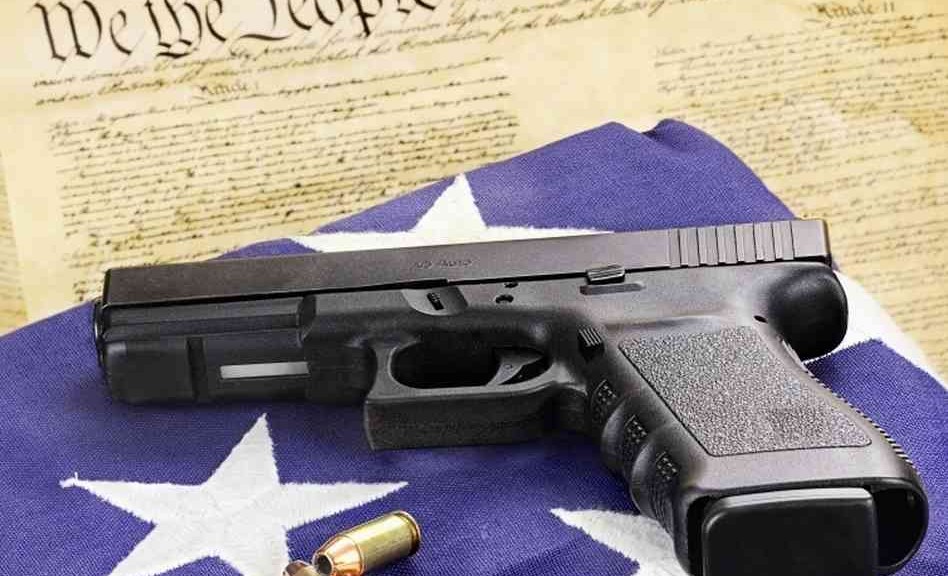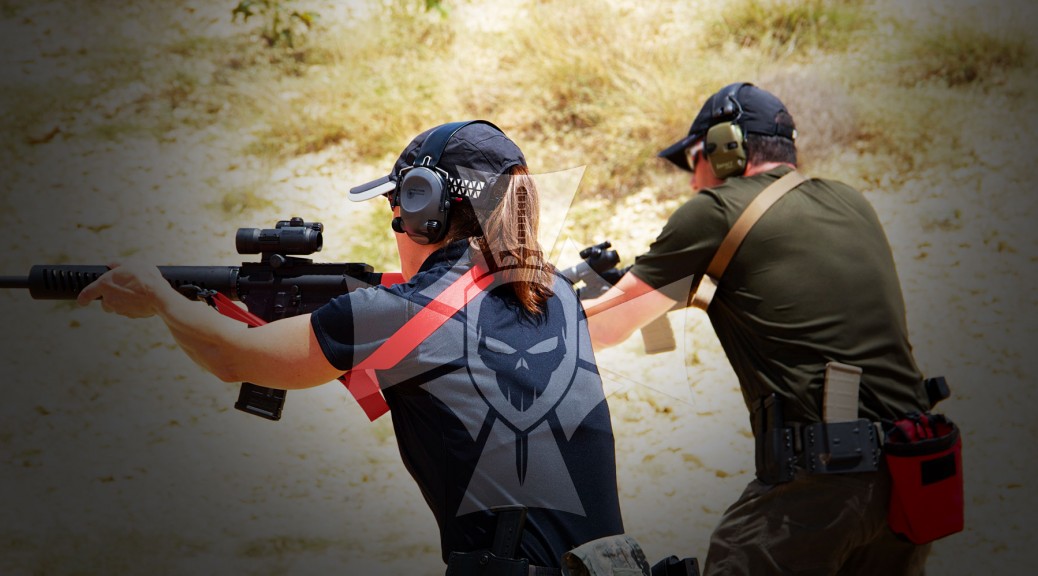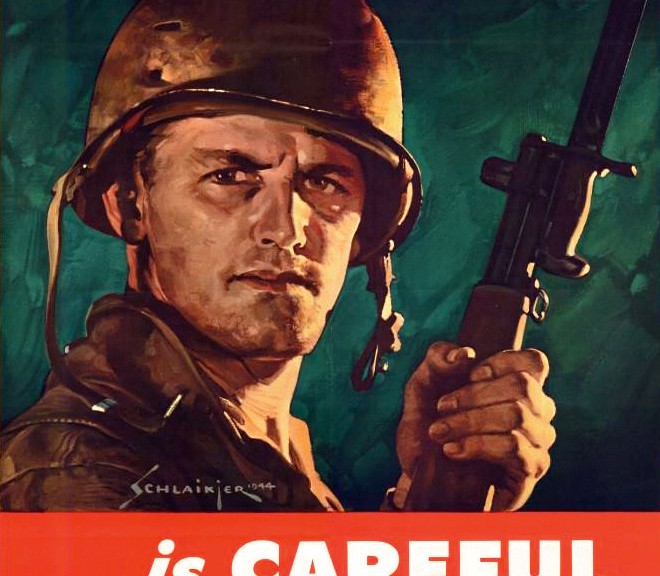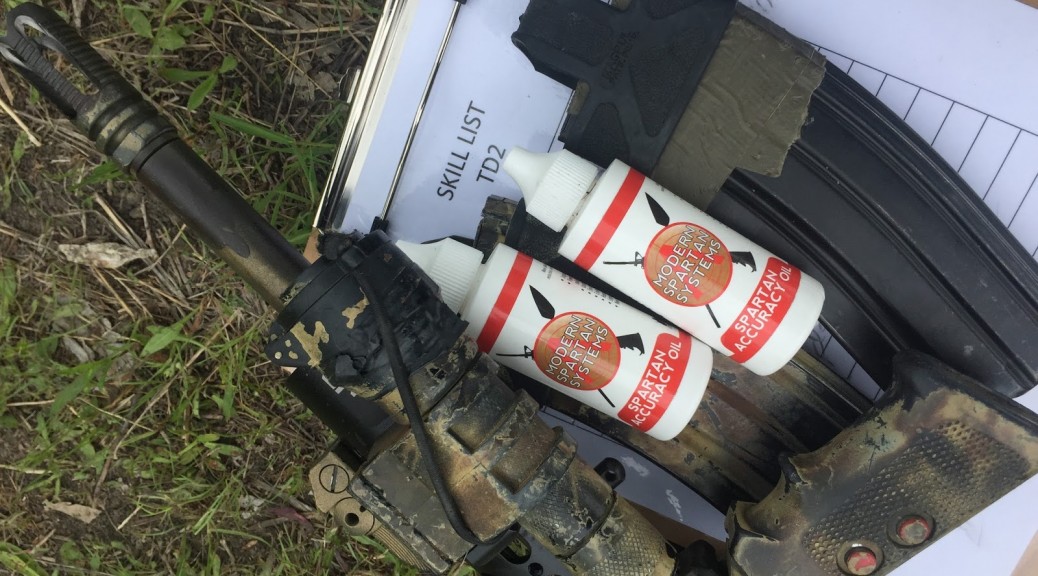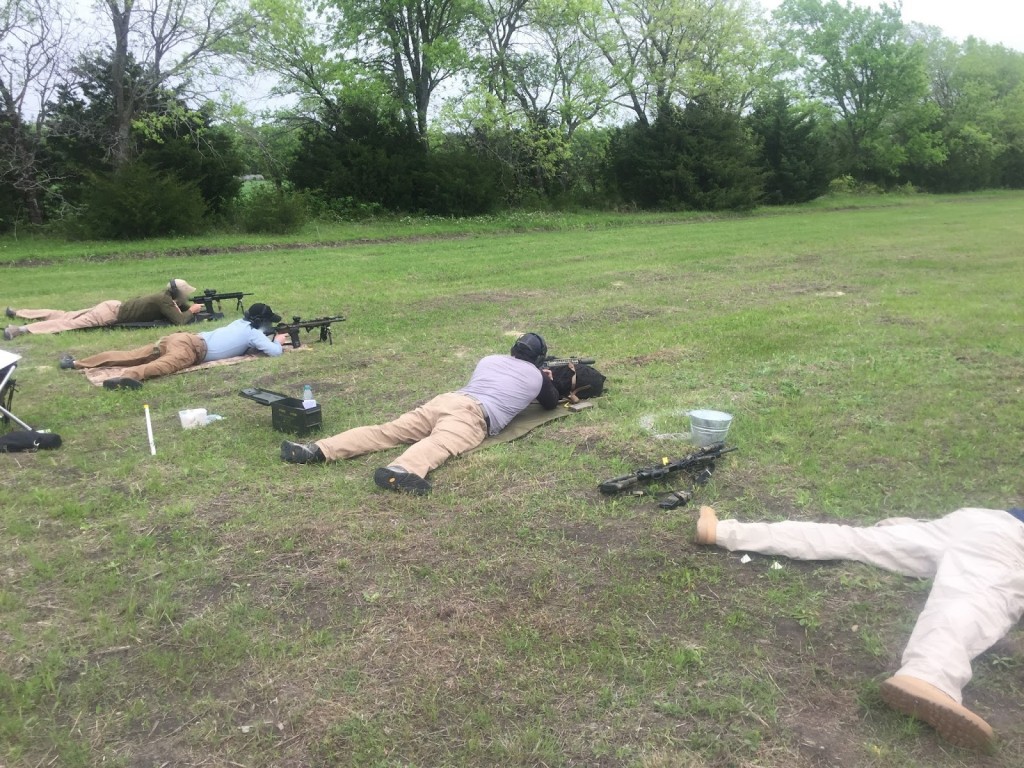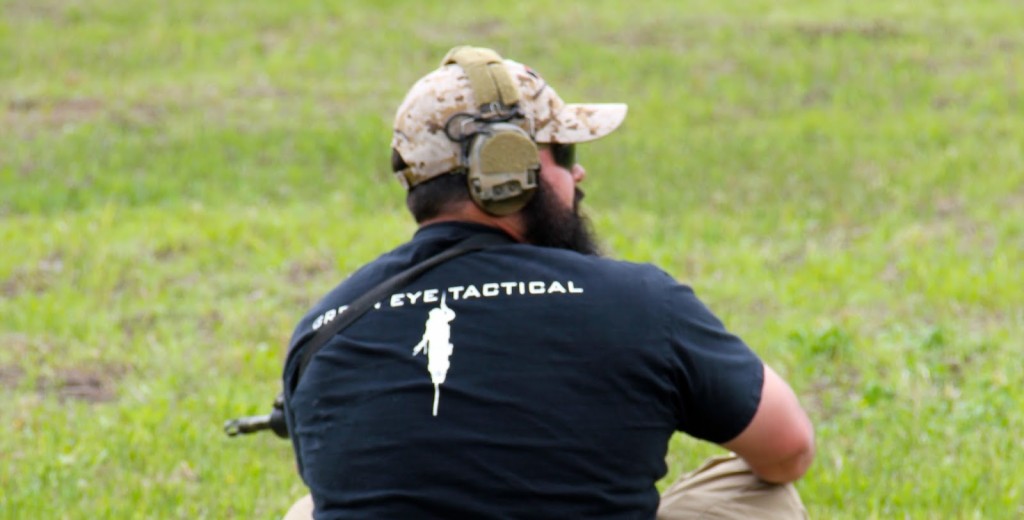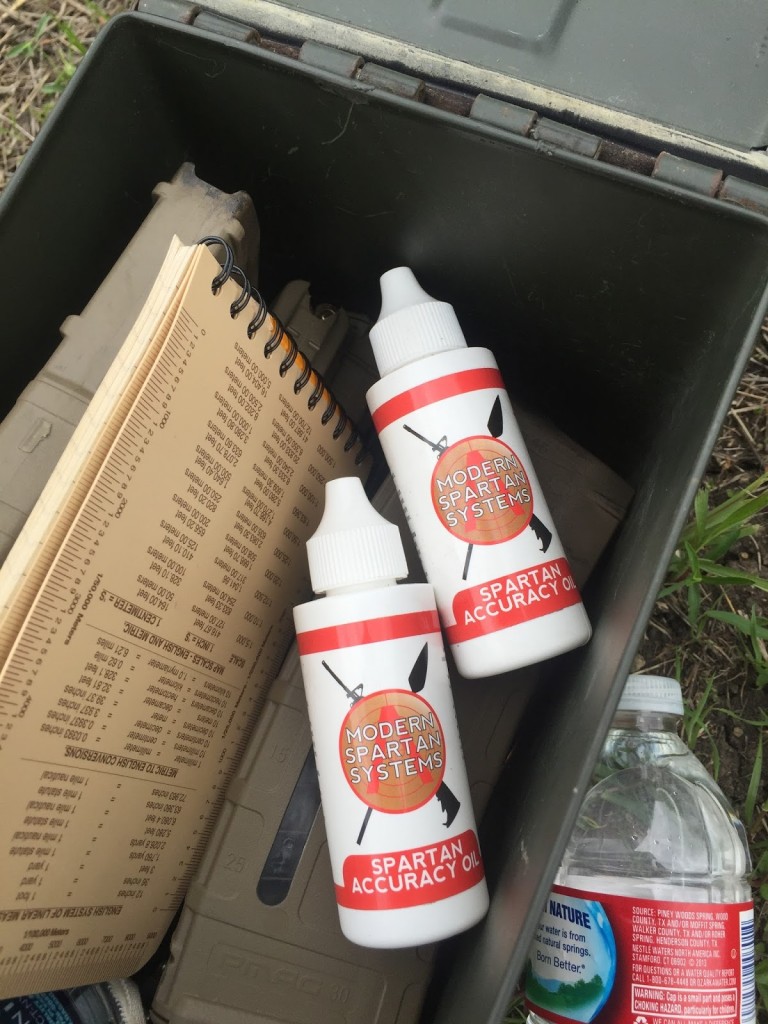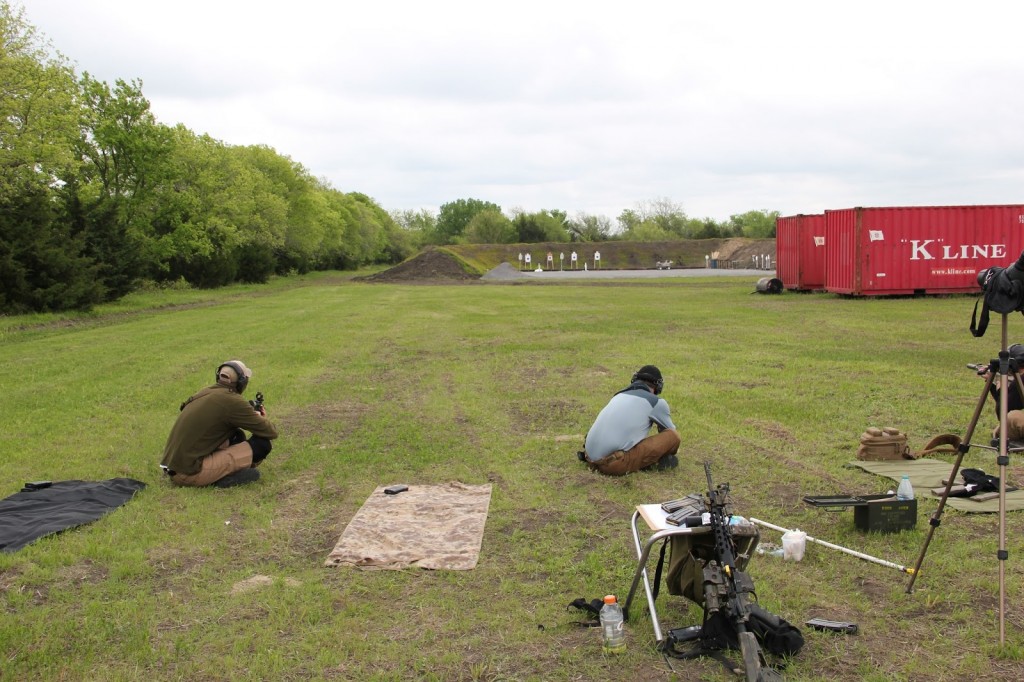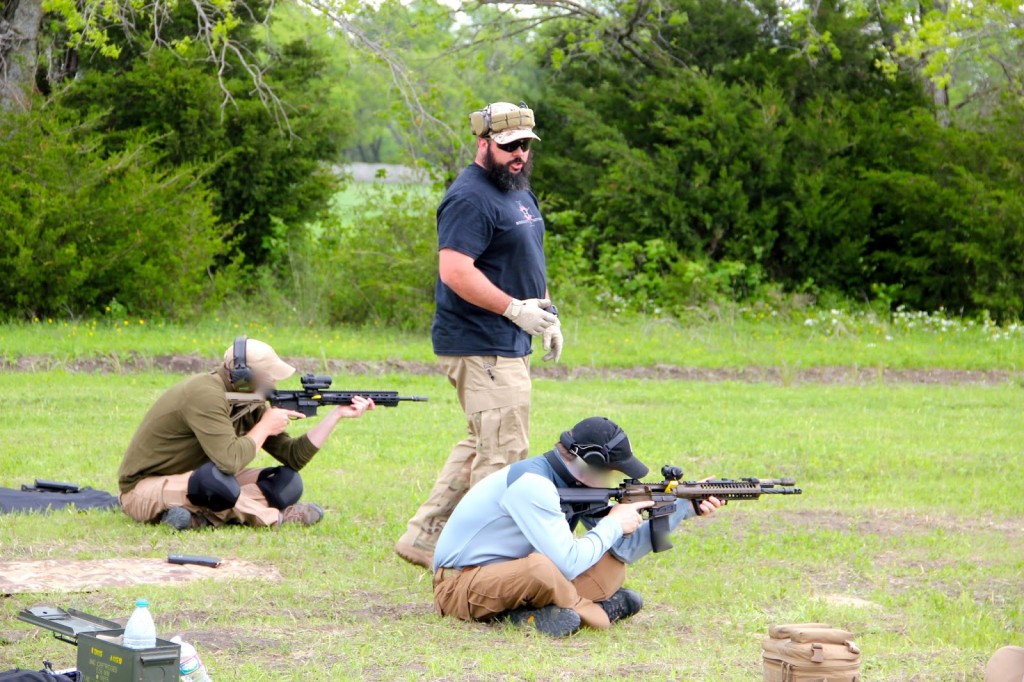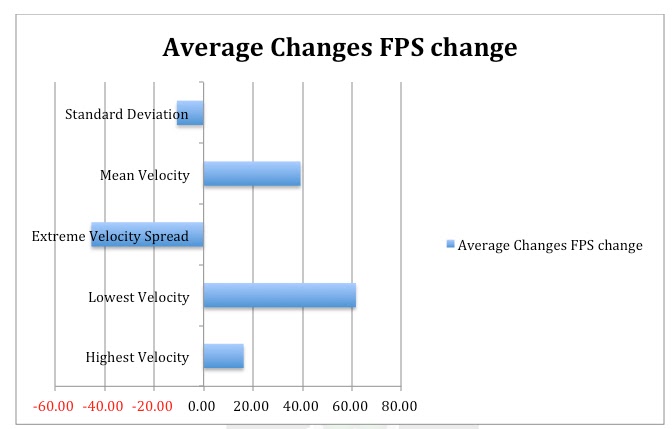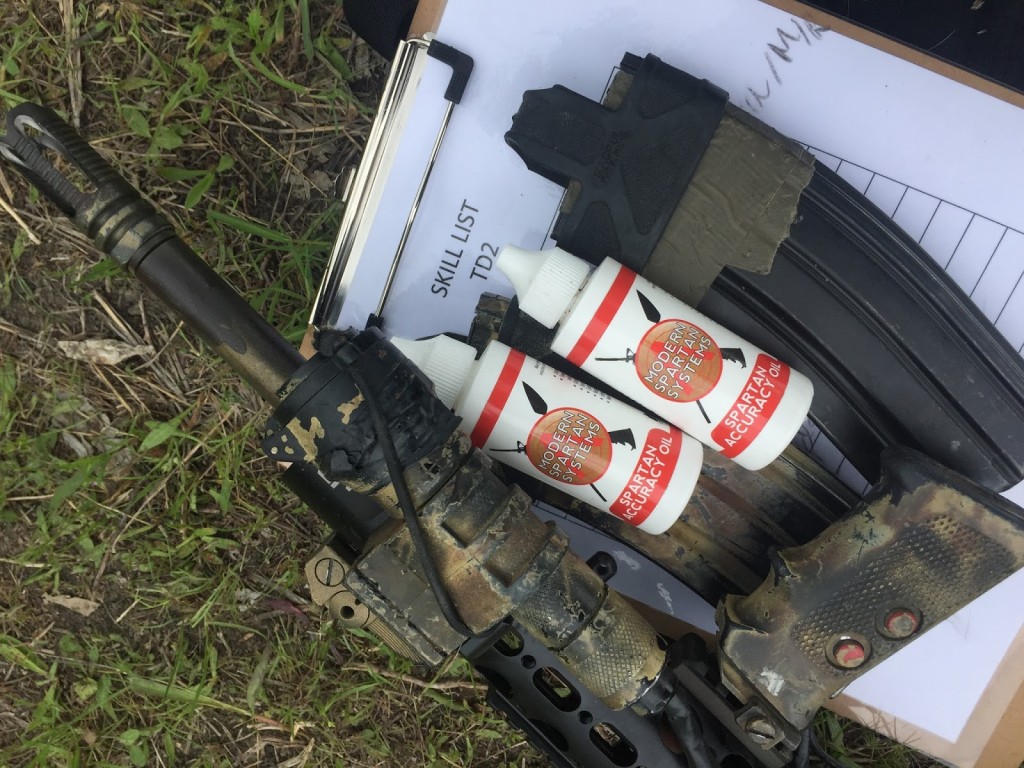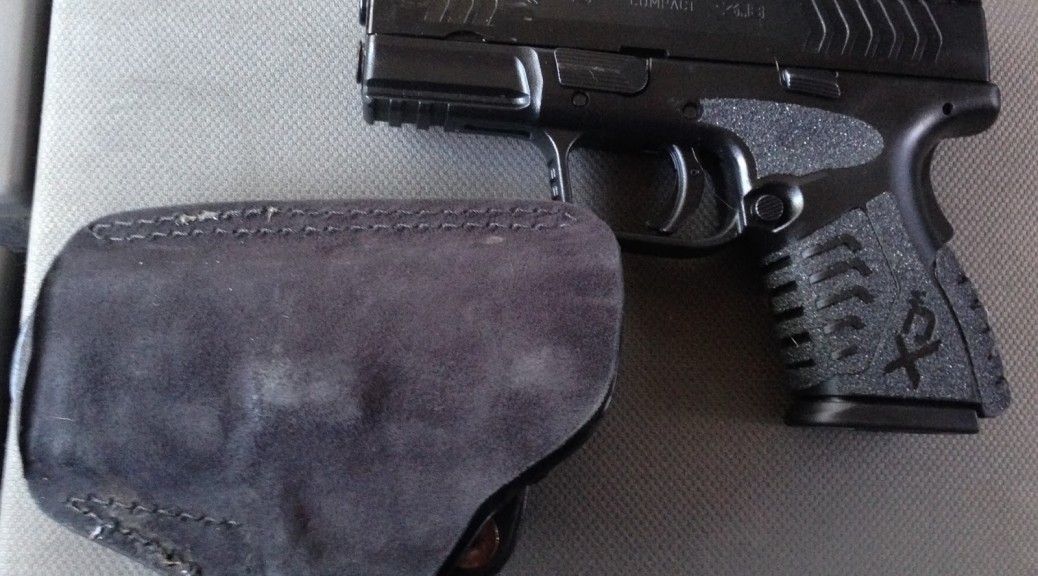I thought to kick off this blog, I’d post something useful. So, here is a rough draft of a guide I produced for my instructors to help guide them in the diagnosis process on the range. Enjoy…
Monthly Archives: December 2015
Business Boycotts Consumers?
For my third ever blog post, I’m going to wade into the Second Amendment discussion that is currently taking over the webs. Now I’m not an orator or a wordsmith, but I thought I’d weigh in. So, here it goes:
Yesterday, an interesting post caught my eye on Facebook. It was from a well-known company in the town where I spent the majority of my Army career, Fayetteville. Grey Group was served with a notice that they must stop selling “magazines with a capacity of over 10 rounds”. Now, States already regulate the sale of weapons, magazines and accessories. An opinion of mine that is shared by a friend of ours – The Constitution.
Money has always been one of the largest elements deciding politics; consumers boycotting establishments usually demonstrate it. What we are starting to see now is the reverse. We have establishments that are so ingrained in our society that it would inconvenience consumers to boycott them. (Notice the choice of the word; inconvenience – I’ll circle back to that.) There are establishments like Bank of America, PayPal, Facebook, and many others that are taking action to influence rights. These actions are ranging from pulling lines of credit to outright censorship.
Why are their campaigns effective? APATHY (I said we’d circle back to this). Apathy is one of America’s greatest weaknesses, which is derived from our greatest strength. We are a Nation where we are truly free and safe. Yes, there have been attacks and difficulties in the county. But, Americans keep on going. When gas prices went up (remember -$1/gal gas?) we were angry, we complained…..while we filled up our tanks. When the housing market bubble broke and banks were bailed out, people were outraged…….from their couch. Our country is so successful that the majority of Americans are insulated from events like this. Before too long, the encroachment of “social legislation” will reduce this insulation. At that point, the average American will look around and express bewilderment in how things “suddenly” changed.
What is the solution? Twofold:
– Speak up!
But talk is going to be less effective than action. Now, I’m, not talking about riots and violence. Speak with your money, speak with your patronage, speak with your inconvenience. That’s right, inconvenience yourself. If you are banking, shopping, or doing business with an establishment that doesn’t represent your views – STOP! And tell them why. Will it be a pain, absolutely. Do you want your bank telling you what you can spend your money on, absolutely not! (far fetched? HSBC, CITI and others practice Sharia compliant banking in the Middle East – try buying a beer there with their accounts).
– VOTE!
Our government IS a representation of our people. Do I need to say that again? It also represents the Apathy in our country. You don’t like where we are going? Vote. And not just once every 4 years for the president. The important elections are your local, district, and state election. Get involved in your city and county council meetings. Get involved in your school board meetings. Pay attention to your State legislature. Vote out incumbents to prevent career politicians. And most importantly, get involved with your children’s education. You may be surprised what they are being taught.
Well, that’s my 2 cents. Don’t agree? Great! Our ability to disagree and discuss points of view is what sets us apart from other societies. Discuss, debate, and be free.
The American Day of Independence
It is a holiday that renews a patriotic spirit in our nation. A holiday that increases the numbers of flags on our streets. Red, White and Blue bunting appears on porches. A holiday of many celebrations: fireworks, parades and barbecues.
Let us remember what we are celebrating this holiday.
We are celebrating our forefathers, who loved freedom so much that they were willing to risk war to oppose their government. Many of the signers expressed that their love for the British Empire was great, however their love of freedom was greater. For them, this was not a one day or weekend event. It was the beginning of a long and costly effort. One that would stretch the next 7 years and take an estimated 50,000 American lives. For them, the celebrations would not be easy won.
As we bask in our freshly mowed backyards with a cold beer in our hands and the sweet scent of the grill in our noses, take a moment to ponder our next 7 years. As our children play and we watch, consider what tomorrow would have held for our founders. And as we watch the bright colorful explosions of light in the skies tonight, look to the neighbors around you and wonder how many our founders lost in the coming fight. Leave out your bunting, fly your flag, and continue to be prideful in the ideals that were inked in blood and created path for the founding of our Republic.
Remembering our Veterans on Thanksgiving
I would like to wish everyone a Happy Thanksgiving.
Today is the day that we give thanks for our blessings. I’d like to target this message to those of us who may be having a hard time finding reasons to give thanks. Especially our Veterans. Veteran suicide is a very real problem, we are losing 22 veterans A DAY right now to suicide. That is a staggering number. My message today will be faith based, it has been what has given me peace in the past.
We read the following about giving thanks from Paul’s second letter to Corinth:
2 Corinthians 4:6,8-9 (AMP)
“For God Who said, Let light shine out of darkness, has shone in our hearts so as [to beam forth] the Light for the illumination of the knowledge of the majesty and glory of God [as it is manifest in the Person and is revealed] in the face of Jesus Christ (the Messiah). We are hedged in (pressed) on every side [troubled and oppressed in every way], but not cramped or crushed; we suffer embarrassments and are perplexed and unable to find a way out, but not driven to despair; We are pursued (persecuted and hard driven), but not deserted [to stand alone]; we are struck down to the ground, but never struck out and destroyed;”
I relate this passage to many of my life events: My first tour to Afghanistan- where our outpost in Khost received no less than a dozen rockets a night for the first month, my first GAF’s into Baghdad- riding in a Pandur APC wondering if we’d make it down the route without hitting an IED. In the end, I had to give up my fear of death and concentrate on what was in my power to influence.
These events, though they may be insignificant to what you are going through, are examples of things that are not entirely in your realm of control. But we worry about them anyways. We allow doubt, depression, and fear to metastasize in our lives. What Paul is saying here is that you can have peace through faith. Faith that there is a guiding force and that things will work out, even if its not the way you want them to. In your moments where you are overwhelmed, have faith.
2 Corinthians 9:11-12
“You will be made rich in every way so that you can be generous on every occasion, and through us your generosity will result in thanksgiving to God. This service that you perform is not only supplying the needs of God’s people but is also overflowing in many expressions of thanks to God.”
Give thanks for what is good in your life today, even if you feel it is overshadowed by the bad. Reach out to friends and family for support. Put aside differences, congregate as family whether you shared a foxhole or not. Remember, you are not alone.
Why should you own body armor?
The question as to whether a person should invest in body armor or not comes up quite a bit in the training industry. For Military or Law Enforcement, this is an easy answer- and often the choice is dictated to you. However for law abiding concerned citizens, it can be a bit ambiguous.
Why do I need this?
The direct answer to this question is: you might not. But, you might not need to concealed carry everyday either. However, with concealed carry, if the day ever comes where you need that sidearm- you REALLY need it. That’s the meaning of being prepared to defend yourself and others. Not that you’re ready for the 99.9% of your life where everything goes according to plan, but for the 00.1% chance that things go bad.
Train like you Fight.
This phrase often gets beaten like the proverbial dead horse and there definitely merit to it. But, this rant is directed at civilians- so let me add a caveat. There is a difference in Fundamentals training and Tactics training. When we train fundamentals, often fatigue and distractions can be our enemy. I’ve seen a lot of civilian shooters that aren’t interested in putting in the blood, sweat, and tears into building a solid base of fundamentals. Fundamentals training is where you establish your base to operate from. If you can’t master grouping in the prone with no gear on and no stressors, how do you expect to place accurate shots with full kit in the rollover prone, shooting under a vehicle? So- before you buy a new rifle and race to an “advanced” training course with a rough Zero on your weapon, just to watch a guy with a funny accent shoot with a plastic bag over his head while doing gymnastic tumbling- work on the basics. Rant off.
Training with gear on becomes important once the fundamentals are established for a number of reasons.
It gives you a chance to shake out your kit and see how well it works. This gives you great opportunity to reposition pouches, readjust hot the vest rides, or rethink your setup.
It gives you the opportunity to see how the body armor will affect you. For the majority of your conventional shooting positions, you won’t see much change other than perhaps bringing your buttstock in one click. You will need to adjust to the weight and pressure, expect to be a little fatigued or sore when you first start. Where you will really start to see differences is in compressed or unconventional shooting positions. You may find that some of the YouTube drills you’ve seen are completely impractical with gear on.
Ceramic vs. Steel
This is a contentious topic; let me start out by reminding the reader that this is directed at the civilian market segment. Undoubtedly, ceramic plates outperform steel in many ways. They are what is used by people who put their life on the line on a daily basis and have been proven in combat beyond all doubt. That being said, there are two downsides to them:
They need to be inspected regularly. Ceramic plate body armor is prone to cracking. The Army has ballistically tested cracked armor and found a low incidence of failure. But there is a reason the military tests it anyways, so you can’t really take gear advice and not the maintenance advice. The issue this presents to civilians is your availability to access these testing facilities. If you’re training for SHTF, then you really need to consider that point.
They can be tougher to purchase. Many of the companies that supply gear directly to the military often place self-imposed restrictions on selling to the civilian market. Even though the gear is completely legal for law-abiding civilians to own, they simply refuse to sell to you.
You will also need to consider the price. Level 4 Ceramic stand-alone plates run in the neighborhood of $500/ea. For front, back and side plates- your setup could run $1,600. In many cases for the civilian market, level 4 can be a bit of overkill. Level 3 armor will stop most all threats you might encounter. Comparatively, AR500 steel plates are in the $80 range. A full steel setup can be had for $230. The weights of both ceramic and steel setups are very similar. A Blackhawk lvl4 stand-alone front plate weighs 8.3lbs, AR500’s composite lvl4 weights 7.5lbs and their lvl3 comes in at only 5lbs (all plates weights were derived from shooter’s cut models). The steel plates are also significantly thinner than the ceramic variants with the ceramic at 0.67 and steel at 0.25. So, we are comparing different types and different levels of protection here. But the differences in price, weight, and bulk add up. You’ll have to weigh those factors against threat level when you decide to pull out your checkbook.
Where should you buy from?
The easy answer is reputable companies, but your first step should be to check the National Institute of Justice website (http://www.nij.gov/topics/technology/body-armor/pages/welcome.aspx). There, you can peruse the registered list of companies and be sure that the vendor you are purchasing from adheres to the proper standards for testing and that your armor will actually perform against the threat level advertised.
Still Confused?
If you’re reading this or are remotely interested in tactical training, then you probably want to add armor to your shopping list. If you just participate in tactical training for entertainment, great- its just another piece of gear to take to the range and vary your training with. If you train because you want to be prepared, then why don’t you have it already?
PERSEC
Over the weekend, an ISIS target list was published to the Internet. It contained a large number of service members and their home addresses. I will not be sharing the list, because I do not want to promote its visibility. The publication of the list has renewed fears and conversations about publically available information. But how does one choose what to post and what not to post? The answer to that question is highly subjective and requires further discussion.
So, let’s talk about PERSEC. As an individual, you need to establish what your threat level and operational need is. I’m going to use myself as an example: Before 9/11, when I was in the 82nd as an Airborne Infantryman- nobody cared too much about who knew that you served. Fort Bragg was an open post; anyone could come on and drive around. Soldiers regularly drove around with the equivalent of their 201 file on their back windshield. No big deal. The treat level was low (arguably).
Shortly after 9/11, I made it into the Unit. The covert nature of operations and the need to travel as such drastically changed my threat level and need for privacy. At the time, my Internet profile was pretty clean. I didn’t have a Facebook page, MySpace profile, or anything like that. I was however; notified by the Unit security officer that I did have something I needed to take care of. My hometown church that my parents attended began publishing the church bulletins on their websites. They regularly did prayer requests for deployed troops, by name, which effectively broadcasted your deployment cycles. I spoke with them and they fixed it. Here the threat level was extreme.
Leaving the military and entering the private sector has been a huge adjustment. Simply being the same gray man that you were in Special Operations won’t fill your classes. The level of detail being published by former SOF members in books or the increasing level of sensitive operational photos on social media has created a culture in the tactical industry, where you aren’t “legit” unless you post photos or stories that violate your NDA and the “Quiet Professional” mantra. As such, social media marketing plays a very central role in the tactical industry. As a whole, the level of disclosure is very self-regulating. I do not post pictures, details, or stories linking myself to specific mission that were conducted, others freely do so. In this example, the threat level is still high, but the need for publicity necessitates a certain assumption of risk.
What do these three examples demonstrate? PERSEC is a balancing act based on Threat VS Need. A person attempting to make a living from firearms and tactics instruction has to publicize him/herself to some extent. This will undoubtedly increase the threat level, which will have to be countered by some mitigation or preparedness. Does a Service member or LE officer share the same justification? Most likely not.
If you don’t know what your exposure level is- you probably need to Google yourself. You may be astonished with the level of information you find. Sites will be archived, but you can get on most places and control what is available on the surface. It is also a good idea to set up Google Alerts for your name, your family’s names or your company name. That will give you an email notification, should content containing your name be published. These are just some of the many tools that are available to give you some control and oversight over your exposure level.
Why should you care?
 The mode of operation of terrorist organizations and hate groups has moved to the highly decentralized operations model of Remote Tasking. This means that followers are not directly connected to the higher organizational structure; instead shared views and social media networks connect them. This means a leader only has to broadcast a message, like the ISIS kill list, and encourage followers over social media to act on them. This means that if you are at risk, then your necessary situational awareness has moved from noticing things out of place in the physical world. You have to have social media situational awareness as well. You have to monitor what you project on the interwebs as well as monitor what others are posting. How you act on the information will vary and depend on your individual Threat VS Need assessment and the level of risk you are comfortable with.
The mode of operation of terrorist organizations and hate groups has moved to the highly decentralized operations model of Remote Tasking. This means that followers are not directly connected to the higher organizational structure; instead shared views and social media networks connect them. This means a leader only has to broadcast a message, like the ISIS kill list, and encourage followers over social media to act on them. This means that if you are at risk, then your necessary situational awareness has moved from noticing things out of place in the physical world. You have to have social media situational awareness as well. You have to monitor what you project on the interwebs as well as monitor what others are posting. How you act on the information will vary and depend on your individual Threat VS Need assessment and the level of risk you are comfortable with.
Modern Spartan Systems Accuracy Oil Review
A little while ago, Modern Spartan Systems shot me an email about their products. Before speaking on the phone, I did my due diligence and dug into them. I’ll admit, some of the claims they were making threw up some red flags for me, mainly the claim that it tightens shot groups. I didn’t see any really convincing test data to properly back up the claim. I kept digging around and watched their videos. The closest thing to a scientific test I saw was their video of the Timken Bearing Test. The test was pretty impressive, but I was still a bit wary of the accuracy claims. So, when I finally spoke to them on the phone, I agreed to properly test the claim in an upcoming Basic Tactical Rifle course. The Basic Tactical Rifle course I teach was a great fit for the testing, because we spend time on the chronograph and grouping- so measuring results would be easy.
I’m not a bench rest shooter, and I did not feel in our application, that measuring shot group size would be an honest metric. The shot group size would naturally decrease throughout the course as we worked on skills. Grouping size contained too many non-deterministic variables to reliably test. For this reason, I focused on provable data. While more consistent velocity alone doesn’t necessarily mean better accuracy, consistent velocity is a key deterministic variable of external ballistics and does directly translate to bullet (gravity) drop when combined with other deterministic variables. Just wanted to throw that in there before the peanut gallery chimes in.
Setup
I asked all the students to clean their bores before they showed up so we could get clean results. I used an Oehler 35p chronograph. The Oehler 35p is an industry standard chronograph, which has 2 stop screen channels and compared velocities between the two to ensure there is not an error.
Day 1:
We shot a string through the Oehler, without the oil, to establish velocity numbers and select a good zero distance on each rifle. We continued our training for the rest of the day without issues (we did find one rifle’s T-1 sight had the worst parallax movement I have ever seen past 50yds in a red dot sight, but that is another story) Students were told to clean their bores again that night and show up clean the next day.
Day 2:
Early that morning I was notified we were -1 student as one got a sectional cleaning rod and multiple patches stuck. (Stop using Otis origami patches, use one square in your caliber and pull, don’t push from chamber to barrel. If it takes more effort than you can exert without spilling your beer (don’t judge- you know you do this), stop and lightly tap it out the way it came with a mallet).
On arrival, we followed the initial treatment protocol.
- We ran a patch wet with Accuracy Oil through each bore a few times.
- We then fired a 10 round group @ 100yds.
- After checking targets, we re-treated all barrels, running a patch wet with Accuracy oil through each bore a few times.
- We then fired a 10 round group @ 100yds.
- After checking targets, we re-treated all barrels, running a patch wet with Accuracy oil through each bore a few times.
- We then fired a 10 round group @ 100yds.
- After checking targets, we re-treated all barrels, running a patch wet with Accuracy oil through each bore a few times.
- We then fired a 10 round group @ 100yds.
- After checking targets, we re-treated all barrels, running a patch wet with Accuracy oil through each bore a few times.
- We then fired a final 10 round group @ 100yds.
- All rifles were then chronographed.
To summarize- we cleaned, then treated, then fired 5 x 10rd groups, treating between each group, then recorded data.
Results
Everyone in the class was pretty amazed by the results. Every shooter gained velocity, decreased their standard deviation, and drastically decreased their extreme velocity spread.
Definitions
Just in case you may not be familiar with chronograph data or it’s meaning, let me define the terms as the Oehler 35p captures them:
Highest Velocity- simply, the fastest value collected.
Lowest Velocity- simply, the lowest value collected.
Extreme Velocity Spread- this is the simple difference between the highest and lowest value collected.
Mean Velocity- This is the average of the data collected.
Standard Deviation- this value describes the uniformity. The value is represented like this: +/- 18fps. This value means that, based on the data collected, at least 2/3rd of the rounds you fire will be within 18fps of the average velocity (the actual math behind calculating this will make your head hurt, just trust me here).
THE HARD NUMBERS
Now, Let’s have a look at the equipment used. Below is a chart of the rifles and the ammo they used, each ammo type was from the same lot, respectively (I apologize in advance, I’m not a spreadsheet pro- deal with the lack of aesthetics):
I liked that we had a good spread of brands and ammo, so we could rule out values only being consistent to one type or brand.
Here is the weather condition from the two days at the time of measurement for each day. No huge differences that would drastically alter the results
Now, let’s get down to it. Here is Gun #1’s results and I’ll break down the numbers:
The Clean Bore column represents the data from Day 1, which was untreated with the Accuracy Oil, the Treated Bore is from Day 2 after the treatment steps were finished.
- We can see right away that the Highest Velocity and the Lowest Velocity both increased.
- We also see that the Extreme spread decreased, which is great.
- The Mean Velocity increased.
- The Standard Deviation decreased.
All of these numbers are improvements, indicating the Accuracy Oil works. -4 on a standard deviation may not sound like much, but it is.
Now that we’ve broken down the results, let’s look at the other 4 rifles:
Yep, you’re seeing that right and we were just as impressed when we saw the results print out. Every single rifle registered improvements across the board- regardless of rifle manufacturer and ammo type.
Some rifles recorded results that were FAR more drastic than others, but that could also be explained by barrel condition. The manufacturer claims the oil bonds with the inside of the barrel, creating a smoother surface- decreasing friction. So, if that is correct, then a barrel with more imperfections could show more improvements than a barrel in better condition. The results on Gun #3 are an example of this.
Now, let’s see an average of all the guns:
Fairly impressive results, but how does that translate to accuracy? As I stated before, velocity data is one of the key deterministic variables of external ballistics. They will compound with other variables to produce your shot group. Many shooters in the industry blow this off, because they don’t think it matters much. But, then they spent $1,200 on a sub MOA rifle, and another $600-$1,200 on quality optics, because it doesn’t matter, right? EVERYTHING MATTERS. Remember, change in drop from velocity will compound with the accuracy of the barrel, consistency of your sight placement, marksmanship fundamentals, and other external ballistics variables to produce your shot group. Don’t let your equipment add unnecessarily to the error you will induce to your shot group the second you wrap your meat-grippers around that rifle.
Here are some more aesthetically pleasing charts of the average changes in FPS and %:
Here is a chart, referencing Gun #2 and translating the velocities to inches of drop at 300yds.
What this is showing is that this shooter’s lowest point of impact raised by 1.3″ and his average point of impact by 1″. This means that his rifle is now shooting flatter out to 300yds. If you customize your zero distance, that 1.3″ gain can help a lot in balancing how high your round is above your line of sight between 100-200yds and how low it is at 300yds.
The Extreme Velocity Spread section shows the difference, in inches, of the high and low velocity rounds. This translates to a difference in shot group size (yes, other external ballistic factors will affect this as well). So, untreated we had a 1.8″ size and treated we had a 1.2″ size- a change of -.6″ or 33.33%.
Gun #2 had fairly average results in our group, here’s Gun #3:
CONCLUSIONS
The product works with regards to its muzzle velocity claims, get this stuff in your barrel now. I still want to see better and more extensive testing. If this oil is decreasing friction to this extent, we should see a very noticeable increase in barrel life- I want to see numbers on that. I’d like to see how many rounds this treatment lasts, and see a treatment schedule recommended. I would like to see some testing on how it performs in the upper receiver beyond “it feels great”. Until that happens, I can’t recommend that guys who pull triggers doing jobs where their lives depend on it put this on their bolt. But, I will absolutely recommend getting this oil in your barrel today.
On a side note, before this course I used their Carbon Destroyer on my bolt. I had a decent amount of carbon plating on it. I let the product soak in it while I cleaned my bore. Almost all the carbon came off with an all-purpose brush. Sorry I didn’t get any pictures of the before and after, but give it a try yourself.
AIWB carry in Green Eye Tactical classes
TL/DR: AIWB is allowed and instructed in relevant Green Eye Tactical training courses.
The last month or so has seen a great deal of buzz in the industry about Appendix Carry. It started off with an ill-informed article in an NRA publication and now a number of well-known instructors are banning or restricting Appendix Carry in their concealed classes. These instructors have well established track records for courses and their rationale for making these decisions, based on their class format, should not be questioned. The primary job of every firearms instructor is the safety of his or her clients.
Now, since I’ve noticed a lot of angry (and uninformed) comments about these posts- I’ve decided to make a very detailed post about the “why”. I’m not writing a wall of words to argue one way or the other. I’m going to post the full methodology I use (and I was taught with) so that when you’re looking at attending other training courses, you have some information to evaluate the content with. I’m not talking about the instructors that made the decision to ban or restrict- they are all top-notch. I’m more talking about the ones that will have you AIWB on hour 1, day 1 while rolling on the ground and shooting between your legs.
Why do you allow it?
Because I teach it, I don’t “drill” the technique, I use a building block approach to all techniques I cover and crawl, walk, run is always in effect. If you are looking for run-n-gun training courses, keep looking- you’re in the wrong place. If you’re looking for elitist training, where you can brag that you were one of the few that could attend based on the high course pre-requisites, keep looking- you’re in the wrong place. If you judge a course by how high the round count is, well….you get the idea. Now, just because I allow it, doesn’t mean you get to do it. The point of building block training is to build a solid base. I’m not going to let anyone live-fire a technique that they can’t competently and consistently demonstrate in a dry-fire capacity. (I do keep a pair of airsoft rifles and pistols on hand for courses for use in extreme cases).
Types of Carry
There is no one-carry method that works well in all environments and situations. If you fall into the crowd that identifies as: “I carry (insert AIWB or other method here)”, then you need to reevaluate what you are doing. AIWB does have a number of benefits. It keeps the holstered firearm near our “working area”, which lends itself well to accessibility, retention, and deployment if engaged hand to hand. It also is generally, but not always, the more concealed method for carry. The downside is comfort, especially if you are in a seated position for long periods of time. Individuals with large waistlines may have more difficulty accessing the firearm as well. This is why there are other methods of carry, and none of them should be looked down on. If you are wearing a suit, it may be better to carry on the side or slightly rear, or even in a shoulder holster (go ahead and gasp!). The point is- you should be doing a mission analysis of what you are doing to determine your requirements. Once you determine your requirements, then determine the mode of carry, holster, and pistol that best fits those requirements. If you’re mode of carry and equipment doesn’t change fairly regularly, you may not be using the most efficient techniques.
Progression
There is a general progression to pistol draw work. Generally, and arguably, it is more ideal to start teaching a new student from a drop leg holster. It is much easier to manage, has better anatomical index points, and the draw is much less compressed with regards to arm angle. Once the basics of the draw and re-holstering (which is the most important with regards to safety), we have a base to work from. From there, it goes to the belt. With each new carry position, we start with the pistol unconcealed and uncluttered. Each position gets dry-fired before going live. Then you conceal and dry fire again, then you progress to live fire. Notice a pattern? Once the belt draw is good, we move to IWB and the same skill progression is followed.
As you may have figured out- this means a lot of dry fire. How much dry fire depends on the class and if the key safety tasks for the skill are being executed properly. I do not run high round count courses. While a course may list 850 rounds for a 2-day course: that is based off of a best case, everyone is squared away, all I’m doing is blowing the whistle after giving instruction with minor feedback. That pretty much never happens . I make 0 guarantees that you won’t be driving home with 50% of your ammo still left. I also make 0 guarantees that you get all the way to the more difficult technique. But, then again- what were you doing coming to my course if you equate success to shooting all your ammo?
What is the point of this? Repetition alone is not training. Practice doesn’t make perfect. Perfect practice and error free repetition make perfect.
Equipment
You need to make sure that you are using the proper equipment for any training you are doing. When we talk holsters for concealed work- at a minimum we are talking hard leather, ideally- we want Kydex. The holster should be shaped so that there are no snag hazards during re-holstering, it should completely cover the trigger guard and the safety (if present), and it should firmly hold the weapon in position. As for the pistol, it should be carry safe. Really, this isn’t unique to concealed work. The training industry has a lot of competition creep into it. People attend training courses with modified weapons that wouldn’t be safe for the tactical application they are training for in the first place. For pistols this means a trigger weight of 4-4.5lbs MINIMUM. It needs to be drop-safe. All modifications should be carefully planned, based from your mission analysis, and performed by a qualified and reputable gunsmith. It should be in good working order and pass a functions check (you do know how to perform a functions check your pistol, right?) before training.
Training vs. Entertainment
This isn’t the first time I’ve brought this up. There is a constant battle in the instruction industry to fill slots. Every instructor is vying for the attention of the “industry” and the “industry” is fickle. The temptation is always there to do some training that some nutjob thinks is cool, like shoot with a plastic bag over your head, to generate more interest. Some cave to this. To some extent, your clients do have to have a good time, and you will need to make small compromises- but it shouldn’t compromise content or safety. When I went through OTC at the Unit, we dry-fired at a piece of tape on the wall for a week straight, with instructors immediately correcting the most microscopic mistake or inefficiency. People say they want “real Operator training” but, I suspect that if I listed a 5 day course where the students were going to do nothing but dry fire at a piece of tape- the booking results would be predictable. Think about that the next time you consider your training.


